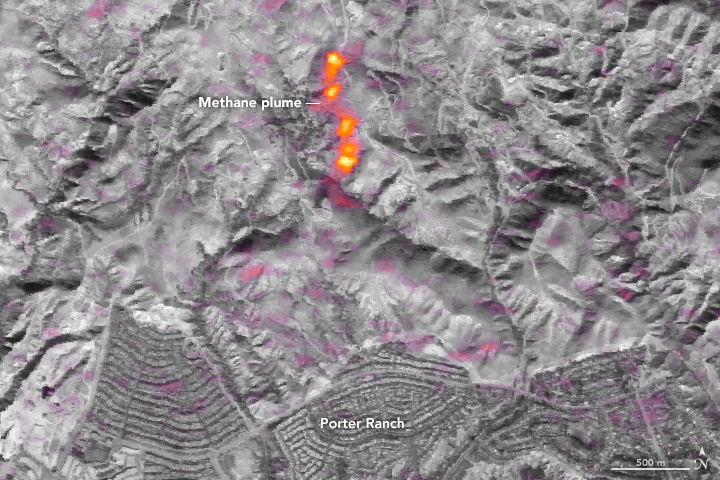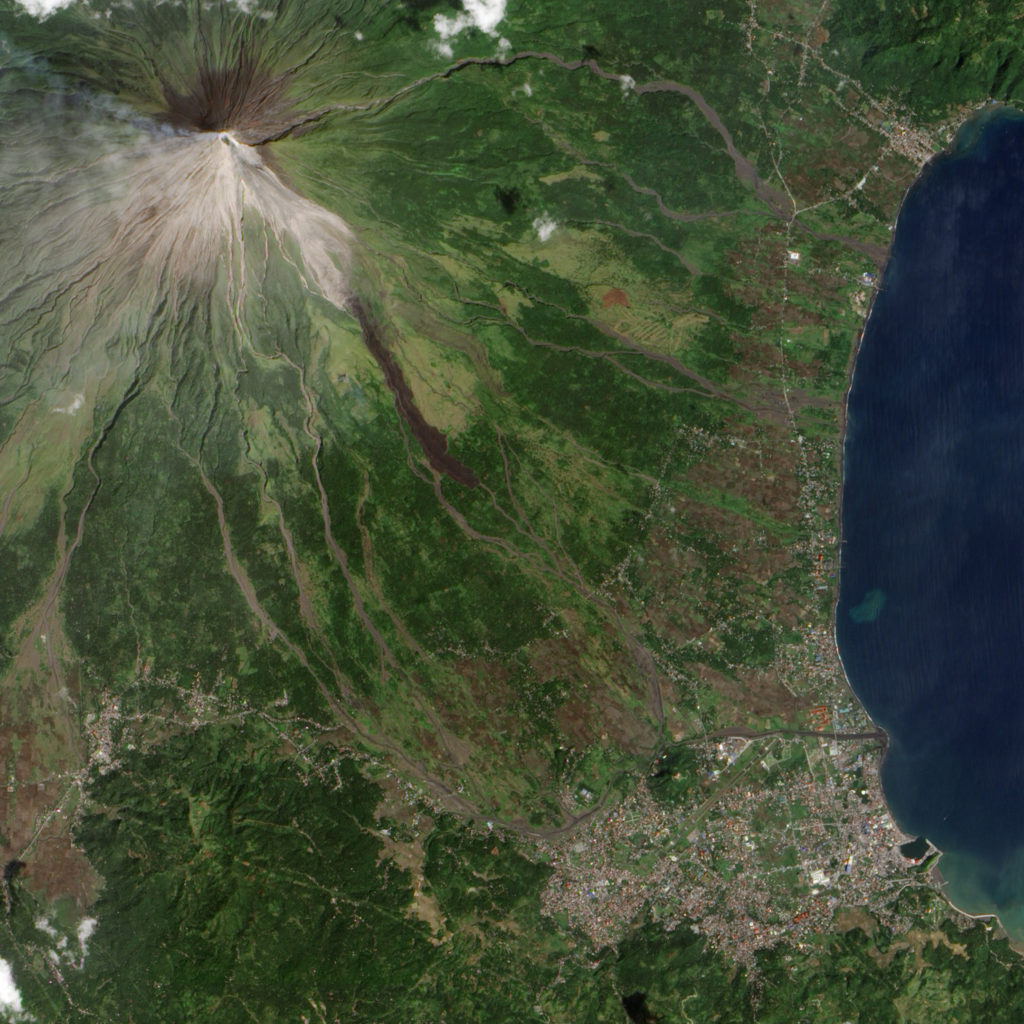Earth Observing-1 (EO-1), one of NASA’s pathfinder Earth satellites, was launched back in 2000 as part of their New Millennium Program. Its original mission was designed to last one year and it was designed to operate for about 1.5 times that duration. Seventeen years later, we can safely say that it has far exceeded expectations.
Now EO-1 is finally set to retire on March 30, 2017. Some of its achievements include being the first to map active lava flows, track re-growth in the Amazon and measure a methane leak at a facility from space. During its operation, more than 1500 papers were published based on EO-1 research.
Fig. Methane emissions detected by EO-1’s Hyperion (Source: earthobservatory.nasa.gov)
Two of the instruments on board the EO-1 that made this possible are the Advanced Land Imager (ALI) and the Hyperion. The ALI among other things made observations on forest cover, crops, coastal water, etc. and served as an important stepping stone in the design of imaging technology aboard succeeding Earth observing satellites. The Hyperion was a hyperspectral instrument that allowed for the observation of chemical constituents on the Earth’s surface in very fine details. They could observe the mineral composition of an area, monitor volcanic activity and track vegetation.
An example of the accessibility and capability of EO-1’s instruments is the case of archaeologist Stephen Savage from Arizona State University and his team. They could determine that copper-mining and smelting was an important aspect of early state-level society in the Eastern Mediterranean from just logging in to a website and requesting that the satellite point its instruments at the region of their interest the next time it flies over instead of making a long trip and spending days gathering data.
Fig. The Mayon volcano emits a plume of smoke (to the West) as captured by the Advanced Land Imager (Source: earthobservatory.nasa.gov)
However, if you’re hoping to catch a glimpse of this exceptional satellite as it makes its way back to earth, you will have a long wait. Although it is being decommissioned on March 30, it will take another 39 years to re-enter the earth’s atmosphere.
You can find out more about the EO-1 project at eo1.gsfc.nasa.gov and see more news and images from current NASA earth observing satellites at earthobservatory.nasa.gov.
Sources:


